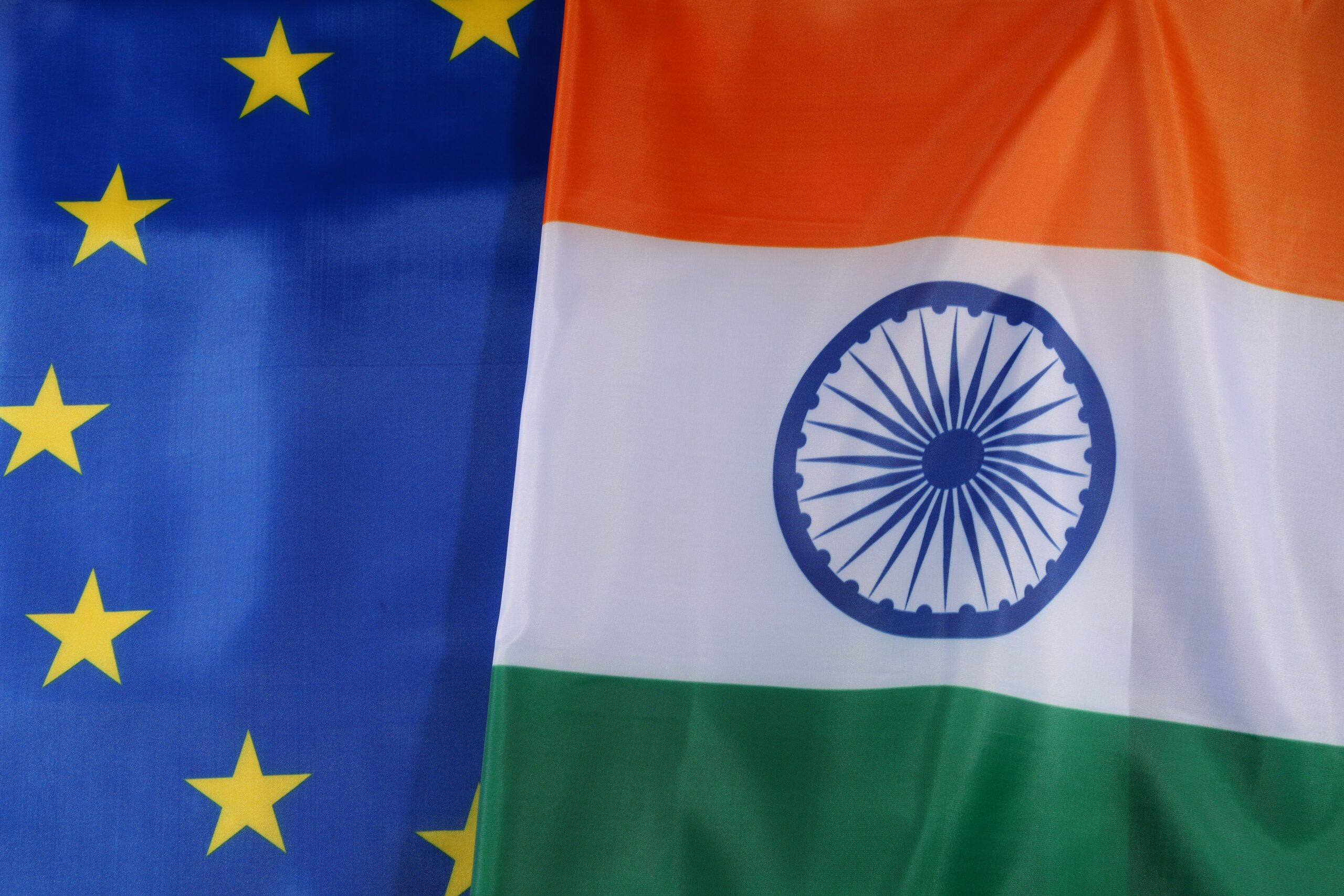Chloe Teevan and Gautam Kamath argue that the EU and India have a shared interest in deepening their tech partnership as they strive for digital sovereignty.
Ursula von der Leyen and the European Commission are in New Delhi today, where tech sovereignty should be at the heart of the discussions.
Caught between the American Scylla and Chinese Charbydis, the EU and India have a common interest in strengthening their partnership in tech and beyond. Yet, while advancing on trade negotiations will be tough, there is real potential for cooperation around building sovereign digital infrastructures and investing in key digital value chains.
Caught between the American Scylla and Chinese Charbydis, the EU and India have a common interest in strengthening their partnership in tech and beyond.To make a future partnership concrete, the two blocs must identify mutual gains on the tech file quickly, pinpointing their respective strengths, weaknesses and complementarities. The EU is a world leader in connectivity and is leading global efforts on trust, interoperability and cybersecurity, while India’s digital public infrastructure has provided its 1.4 billion citizens with access to near-universal public and private digital services. Meanwhile, the two also have real complementarity in areas from semiconductor value chains to the space industry that could drive collaboration.
Building a EuroStack
The return of president Trump to the White House has added urgency to discussions about digital or tech sovereignty in Europe, India and elsewhere across the world. While the application of ‘sovereignty’ to the digital sphere is contentious, in this context it means to exercise effective legal and economic agency – increasingly through a mix of regulation and industrial policy.
In Europe, there was already a growing consensus that the EU was falling behind and needed to do something radical. The Draghi report highlighted the growing productivity gap between the US and EU which is largely due to the gap in digital innovation and the deployment of digital technologies. Leading European thinkers launched the EuroStack initiative in September 2024 to draw attention to the need for Europe to invest in digital infrastructures across the tech stack, from cables to chips to digital payments.
Yet tech sovereignty will not be achieved by focusing exclusively inwards. It would be self-defeating for the EU to follow the US in trying to achieve complete self-sufficiency. The EU will not be able to reshore entire semiconductor value chains but can work in partnership with others to overcome dependencies in terms of critical minerals and key choke points such as access to chips. Similarly, with an ageing population, the EU needs to secure skilled labour to meet its goal of having 20 million ICT specialists employed by 2030, as well as to find new markets for its goods. India is a natural partner given its army of skilled tech workers, thriving digital services sector and complementarities in key digital industries.
India Stack’s global march
India’s shift to being a global leader in digital services is built on a combination of a large domestic digital workforce and the development of its digital public infrastructure, made up of the Aadhaar digital ID, the universal payments interface, a data exchange layer and most recently the Open Network for Digital Commerce (ONDC), enabling a new approach to e-commerce. These infrastructures provide the basis for universally accessible essential government services, drive an innovative digital economy across the region and form the basis of its own tech sovereignty, offering an important reservoir of data for developing domestic AI models.
Now, India is looking outward. By exporting these technologies across the world, the country aims to simultaneously build its global reputation and foster domestic economic growth.
But to cement its own tech sovereignty and gain the economic growth it needs to transform its $4 trillion economy, India still needs to invest in hard physical infrastructure and manufacturing. It is this infrastructure buildout in India that European industry can help partner and finance, to ‘friendshore’ capacity and improve supply chain resilience. Further, India is looking to boost recognition and harmonisation of competencies to allow smooth mobility for highly skilled Indian expats.
EU-India alliance for tech sovereignty
Achieving tech sovereignty will require the right kinds of industrial partnerships, and India can be that partner for Europe. The EU and India have real complementarity in key digital infrastructures. The EU’s elusive digital single market could learn from India’s experiences delivering public services across its population through the India Stack while also working closely with India to develop a common approach to sovereignty across other layers of the tech stack.
At the same time, India could benefit from the EU’s approach to secure and trusted connectivity, reducing supply chain dependencies, de-risking critical infrastructures and ensuring market contestability. There is scope to develop an expanded “sovereign stack” that contains open and interoperable digital infrastructure grounded in shared democratic values.
India also has the potential to be an industrial hub for European digital industries seeking to diversify their industrial base. Despite the adoption of the EU Chips Act to encourage semiconductor production, Europe is still far from achieving the kinds of investments necessary to reshore even lower-end chips. By investing further in research and development and chip design while manufacturing more chips in India, the EU could secure its supply at a lower cost. There is also scope for deeper cooperation on niche areas like quantum and space, as exemplified by the European Space Agency’s recent announcement it would support upcoming Indian human spaceflight missions
Getting started
To get such an EU-India tech alliance off the ground, the two blocs should start by agreeing on broad principles grounded in upholding democratic control, openness, interoperability and trust. Outlining a shared vision should build the trust required to eventually work together on investing in sovereign digital infrastructures globally through the EU’s Global Gateway, opening new markets for European firms in India, and cooperating on critical areas like semiconductors, quantum, telecoms and space. For both Brussels and New Delhi, the message is clear: the road to digital sovereignty runs through partnership, not protectionism. The question is whether they are ready to seize the opportunity, something we will surely find out in the coming months.
About the Authors
Chloe Teevan is the head of ECDPM’s digital economy and governance team.
Gautam Kamath is an independent policy consultant based in Brussels and an Associate in ECDPM’s digital economy and governance team.


